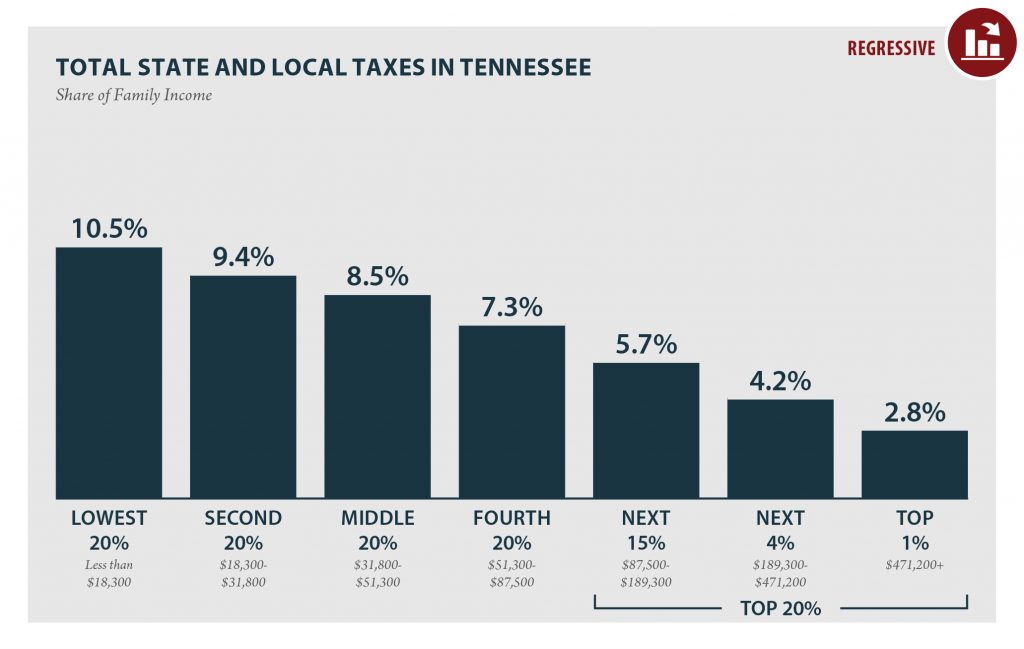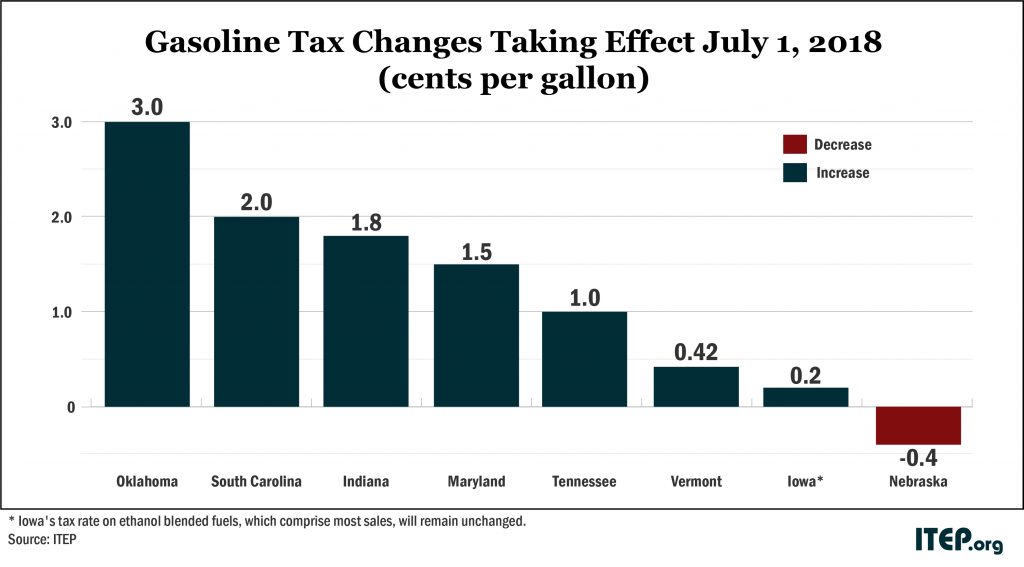Nashville, Tennessee – Like most state tax systems, Tennessee takes a much larger share from middle- and low-income families than from wealthy families, according to the fourth edition of Who Pays? A Distributional Analysis of the Tax Systems in All 50 States, released today by the Washington-based Institute on Taxation and Economic Policy (ITEP) and Tennesseans for Fair Taxation (TFT).
Combining all of the state and local income, property, sales and excise taxes Tennessee residents pay, the average overall effective tax rates by income group are 11.2 percent for the bottom 20 percent, 8.8 percent for the middle 20 percent and 2.8 percent for the top one percent. Nationally, those figures are 11.1 percent for the bottom 20 percent, 9.4 percent for the middle 20 percent and 5.6 percent for the top one percent. The full report is online at www.whopays.org.
Tennessee is sixth among the ten states (the “Terrible Ten”) whose tax systems are tilted most heavily towards high earners (from most to least regressive): Washington, Florida, South Dakota, Illinois, Texas, Tennessee, Arizona, Pennsylvania, Indiana, Alabama. In these states, middle-income families pay up to three times as high a share of their income as the wealthiest families; low-income families pay up to six times as much. Low-income Tennessee families pay taxes at an effective rate that is four times the rate for the top 1 percent.
“While the portion of Tennessee state and local revenue derived from sales taxes has decreased from 39.5 percent to 36.7 percent, the property tax share has risen from 15.6 percent to 17.8 percent, income taxes (personal and business) have dropped from 4.3 percent to 3.8 percent and other taxes have gone from 8.0 percent to 4.4 percent. The overall distributive effect is that state and local taxes have decreased about 4 percent for low-income families and about 10 percent for the wealthiest 1 percent of families.” observed Bill Howell, Executive Director of TFT. “It is also noteworthy that non-tax revenues like tuition for higher education have increased from 32.8 percent to 35.4 percent of state revenue.”
“We know that governors nationwide are promising to cut or eliminate taxes, but the question is who’s going to pay for it,” said Matthew Gardner, Executive Director of ITEP and an author of the study. “There’s a good chance it’s the so-called takers who spend so much on necessities that they pay an effective tax rate of 10 or more percent, due largely to sales and property taxes. In too many states, these are the people being asked to make up the revenues lost to income tax cuts that overwhelmingly benefit the wealthiest taxpayers.” State consumption tax structures are particularly regressive, with an average 7 percent rate for the poor, a 4.6 percent rate for middle incomes and a 0.9 percent rate for the wealthiest taxpayers nationwide.
The income tax in particular is being targeted for elimination by self-described tax reformers across the country and in Tennessee and Who Pays? shows that of the ten most regressive states, four do not have any taxes on personal income, one state applies it only to interest and dividends (Tennessee’s Hall tax on dividends and interest) and the other five have a personal income tax that is flat or virtually flat across all income groups. “Cutting the income tax and relying on sales taxes to make up the lost revenues is the surest way to make an already upside down tax system even more so,” Gardner stated.
The proposal for a constitutional amendment to ban Tennessee from ever having a broad-based income tax is making its way through the General Assembly this year. If it receives the required two-thirds vote of both houses, it will go on the ballot in November 2014 for a vote of the citizens. If it passes, it will lock Tennessee into its dubious status among the “Terrible Ten”. This measure has been promoted by a small part of the wealthiest 1 percent in Tennessee who want to enthrone themselves and their heirs at the top of society and frustrate the ambitions of anyone who happened to be born less fortunate. This is the same group that pushed for the abolition of Tennessee’s inheritance tax last year.
The data in Who Pays? also demonstrates that states commended as “low tax” are often high tax states for low- and middle- income families. The ten states with the highest taxes on the poor are Arizona, Arkansas, Florida, Hawaii, Illinois, Indiana, Pennsylvania, Rhode Island, Texas, and Washington. Tennessee only misses this list because its overall tax rate is the third lowest in the country. When you hear people brag about their low tax state, you have to ask them, “low tax for whom?” In Tennessee, the top 1% of taxpayers pay 2.8% of their income in taxes, compared with a national average of 5.6 percent. Tennessee’s rate is half of the national average and less than one-third of the top rate of 8.8% paid by Californians.
The fourth edition of Who Pays? measures the state and local taxes paid by different income groups in 2013 (at 2010 income levels including the impact of tax changes enacted through January 2, 2013) as shares of income for every state and the District of Columbia. The report is available online at www.whopays.org.




